2-HYDROXYPROPYL ACRYLATE
- CAS NO.:999-61-1
- Empirical Formula: C6H10O3
- Molecular Weight: 130.14
- MDL number: MFCD00021900
- EINECS: 213-663-8
- SAFETY DATA SHEET (SDS)
- Update Date: 2024-12-18 13:37:16
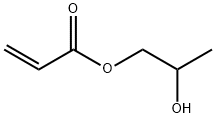
What is 2-HYDROXYPROPYL ACRYLATE?
Description
A case of occupational contact dermatitis caused by exposure to 2-hydroxypropyl acrylate was reported in industry.
Chemical properties
A liquid.
The Uses of 2-HYDROXYPROPYL ACRYLATE
In manufacture of thermosetting resins for surface coatings.
The Uses of 2-HYDROXYPROPYL ACRYLATE
Monomer used in manufacture of thermosetting resins for surface coatings.
Definition
A functional monomer used in manufacture of thermosetting acrylic resins for surface coatings.
Hazard
TLV: 0.5 ppm. Corrosive to skin and eyes. Toxic by skin absorption.
Health Hazard
2-Hydroxypropyl acrylate is an irritant of the eyes, nose, respiratory tract, and skin.
Potential Exposure
2- Hydroxypropyl acrylate is used as abifunctional monomer for acrylic resins; it is used as abinder in nonwoven fabrics and may be used in the produc-tion of detergent lube oil additives.
First aid
If this chemical gets into the eyes, remove anycontact lenses at once and irrigate immediately for at least15 min, occasionally lifting upper and lower lids. Seek med-ical attention immediately. If this chemical contacts theskin, remove contaminated clothing and wash immediatelywith soap and water. Seek medical attention immediately. Ifthis chemical has been inhaled, remove from exposure,begin rescue breathing (using universal precautions, includ-ing resuscitation mask) if breathing has stopped and CPR ifheart action has stopped. Transfer promptly to a medical .facility. When this chemical has been swallowed, get medi-cal attention. Give large quantities of water and do notinduce vomiting. Do not make an unconscious personvomit. Medical observation is recommended for 24- -48 hafter breathing overexposure, as pulmonary edema may bedelayed. As first aid for pulmonary edema, a doctor orauthorized paramedic may consider administering a cortico-steroid spray.
storage
Color Code- White: Corrosive or Contact Hazard;Store separately in a corrosion-resistant location. Prior toworking with this chemical you should be trained on itsproper handling and storage. Before entering confined spacewhere 2-Hydroxypropyl acrylate may be present, check tomake sure that an explosive concentration does not exist.Store in tightly closed containers in a cool, well-ventilatedarea away from oxidizers and reducing agents. W here possi-ble, automatically pump liquid from drums or other storagecontainers to process containers.
Shipping
Corrosive liquids, n.o.s. require a shipping labelof“CORROSIVE.”It falls in Hazard Class 8 and PackingGroup II.
Incompatibilities
2-Hydroxypropyl acrylate can polymer-ize due to heating, initiators, UV light. Can become unsta-ble at high temperatures and pressures or may react withwater with some release of energy but not violently. Reactswith oxidizers, strong acids, nitrates.
Properties of 2-HYDROXYPROPYL ACRYLATE
| Boiling point: | 77°C 5mm |
| Density | 1.06 g/cm3 |
| refractive index | 1.4315 (estimate) |
| solubility | Chloroform (Slightly), Methanol (Sparingly) |
| pka | 13.92±0.20(Predicted) |
| form | Clear to light yellow liquid |
| CAS DataBase Reference | 999-61-1(CAS DataBase Reference) |
| EPA Substance Registry System | 2-Hydroxypropyl acrylate (999-61-1) |
Safety information for 2-HYDROXYPROPYL ACRYLATE
Computed Descriptors for 2-HYDROXYPROPYL ACRYLATE
New Products
(S)-3-Aminobutanenitrile hydrochloride 4-Methylphenylacetic acid N-Boc-D-alaninol N-BOC-D/L-ALANINOL Tert-butyl bis(2-chloroethyl)carbamate 3-Morpholino-1-(4-nitrophenyl)-5,6-dihydropyridin- 2(1H)-one Furan-2,5-Dicarboxylic Acid Tropic acid 1-Bromo-3,5-Di-Tert-Butylbenzene S-2-CHLORO PROPIONIC ACID ETHYL ISOCYANOACETATE 2-Bromo-1,3-Bis(Dimethylamino)Trimethinium Hexafluorophosphate 4-IODO BENZOIC ACID 3-NITRO-2-METHYL ANILINE 1-(2,4-DICHLOROPHENYL) ETHANAMINE (2-Hydroxyphenyl)acetonitrile 4-Bromopyrazole 2-(Cyanocyclohexyl)acetic acid 4-methoxy-3,5-dinitropyridine 1-(4-(aminomethyl)benzyl)urea hydrochloride 2-aminopropyl benzoate hydrochloride diethyl 2-(2-((tertbutoxycarbonyl)amino) ethyl)malonate tert-butyl 4- (ureidomethyl)benzylcarbamate Ethyl-2-chloro((4-methoxyphenyl)hydrazono)acetateRelated products of tetrahydrofuran


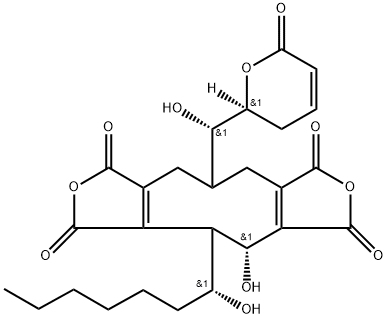
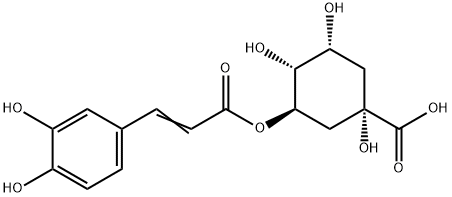
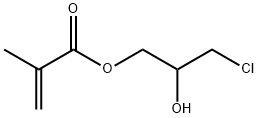
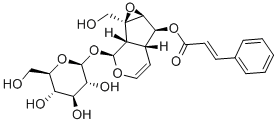
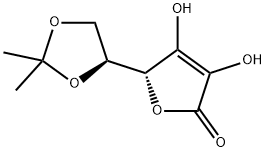

You may like
-
 2 -HYDROXY PROPYL ACRYLATE 99%View Details
2 -HYDROXY PROPYL ACRYLATE 99%View Details -
 2-HYDROXYPROPYL ACRYLATE CAS 999-61-1View Details
2-HYDROXYPROPYL ACRYLATE CAS 999-61-1View Details
999-61-1 -
 1975-50-4 98%View Details
1975-50-4 98%View Details
1975-50-4 -
 2-HYDROXY BENZYL ALCOHOL 98%View Details
2-HYDROXY BENZYL ALCOHOL 98%View Details
90-01-7 -
 2-Chloro-1,3-Bis(Dimethylamino)Trimethinium Hexafluorophosphate 221615-75-4 98%View Details
2-Chloro-1,3-Bis(Dimethylamino)Trimethinium Hexafluorophosphate 221615-75-4 98%View Details
221615-75-4 -
 61397-56-6 CIS BROMO BENZOATE 98%View Details
61397-56-6 CIS BROMO BENZOATE 98%View Details
61397-56-6 -
 14714-50-2 (2-Hydroxyphenyl)acetonitrile 98+View Details
14714-50-2 (2-Hydroxyphenyl)acetonitrile 98+View Details
14714-50-2 -
 118753-70-1 98+View Details
118753-70-1 98+View Details
118753-70-1